Discover 11 hidden attractions, cool sights, and unusual things to do in Peshawar (Pakistan). Don't miss out on these must-see attractions: Peshawar Museum, Peshawar Zoo, and Gorkhatri. Also, be sure to include Bala Hisar Fort in your itinerary.
Below, you can find the list of the most amazing places you should visit in Peshawar (N.W.F.P.).
Table of Contents
Peshawar Museum
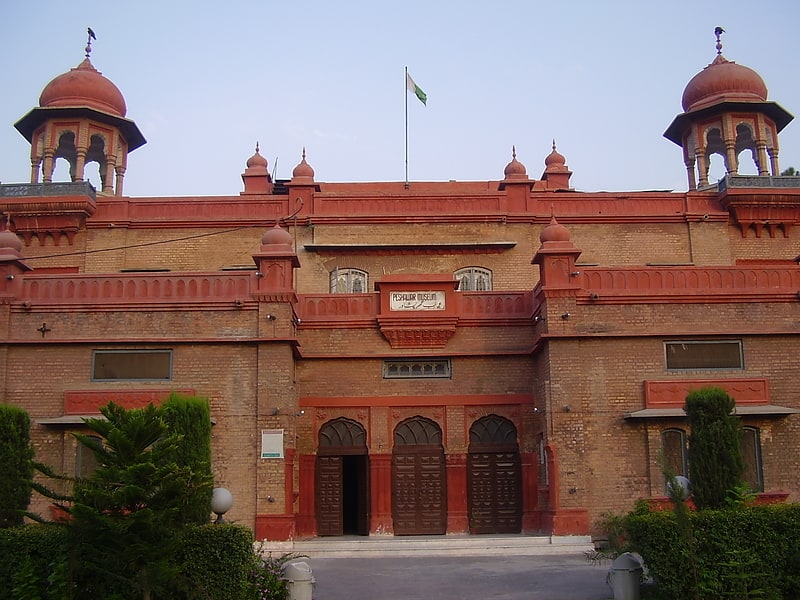
Also known as: پشاور عجائب گھر
Museum in Peshawar, Pakistan. The Peshawar Museum is a museum located in Peshawar, capital of Pakistan's Khyber Pakhtunkhwa province. The Peshawar Museum is notable for its collection of Buddhist artwork dating from the ancient Gandhara region.[1]
Address: Saddar Road, Peshawar Cantt, 25000 Peshawar
Peshawar Zoo
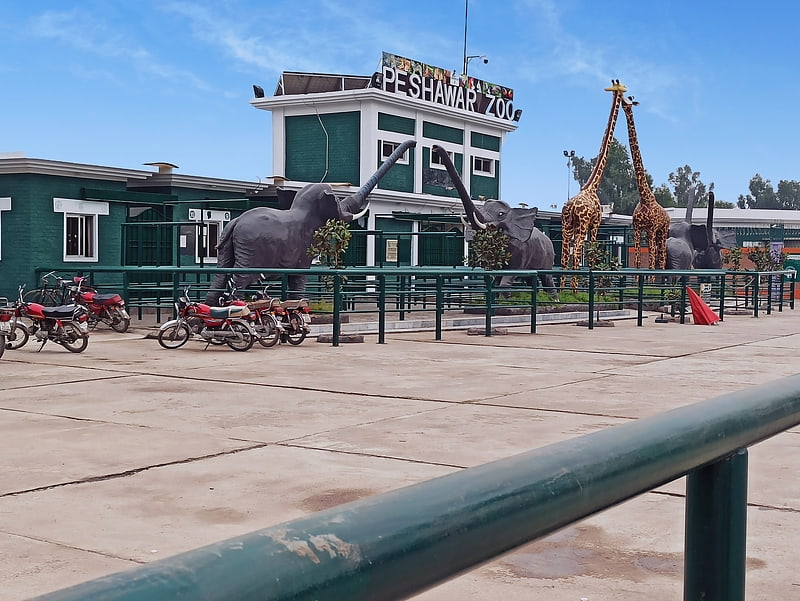
Zoo in Peshawar, Pakistan. Peshawar Zoo is one of the largest zoos in Pakistan and the first ever zoo in Peshawar. It opened on 12 February 2018. It is managed by the Forests, Environment and Wildlife department of the Government of Khyber Pakhtunkhwa.[2]
Gorkhatri
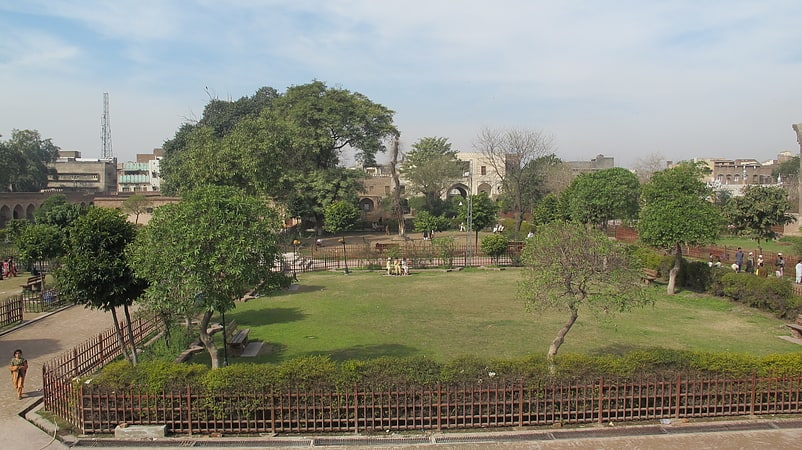
Also known as: گور کھٹری
Gorkhatri is a public park in Peshawar, Pakistan, located within a Mughal-era caravanserai that was built at the site of ancient ruins.[3]
Bala Hisar Fort
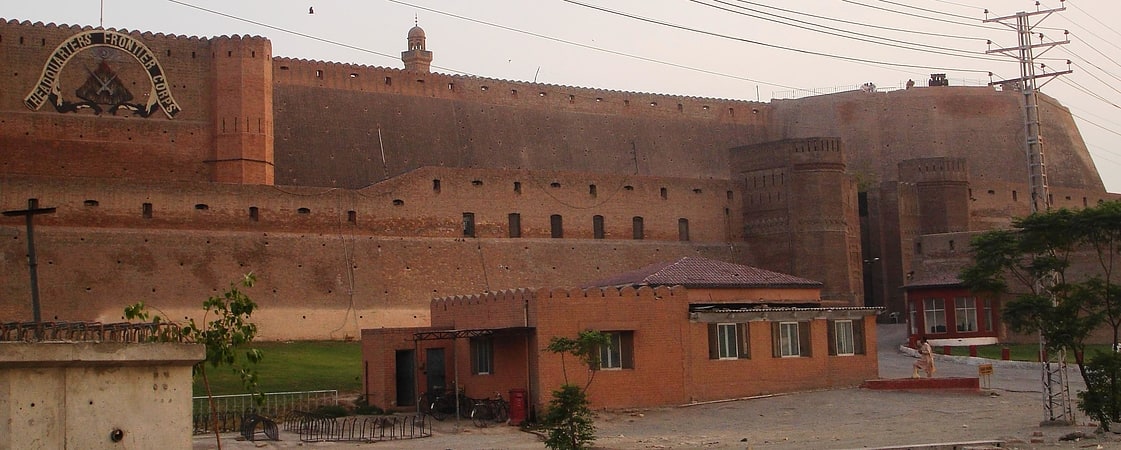
Also known as: قلعہ بالا حصار
Bala Hissar, also spelt Bala Hisar, is a historic fortress located in Peshawar, Khyber Pakhtunkhwa, Pakistan. First mentioned by 7th-century explorer Xuanzang, the fort was used as a royal residence for the Durrani Empire since 1747, when the Afghan king, Ahmad Shah Durrani, conquered Peshawar. The Marathas briefly occupied it after capturing Peshawar in 1758 but it was soon retaken by the Afghans. The Sikhs destroyed and reconstructed the fort after capturing Peshawar in March 1823. In 1849, the British East India Company reconstructed the fort's outer walls.
The fort now serves as headquarters for Pakistan's Frontier Corps.[4]
Mahabat Khan Mosque
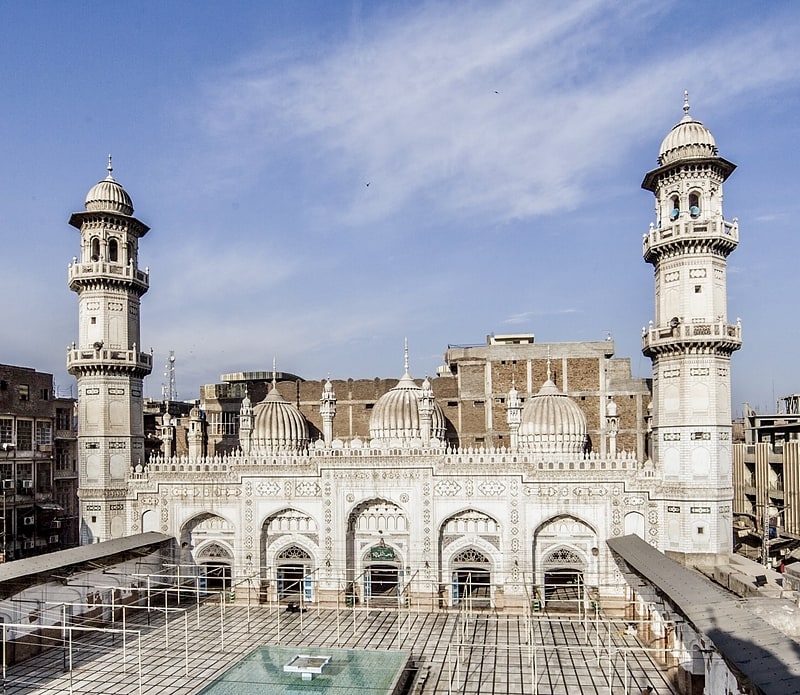
Also known as: مسجد مہابت خان
Mosque in Peshawar, Pakistan. The Mahabat Khan Mosque, sometimes spelt Mohabbat Khan Mosque, is a 17th-century Mughal-era mosque in Peshawar, Pakistan. The mosque was built in 1630, and named after the Mughal governor of Peshawar, Nawab Mahabat Khan bin Ali Mardan Khan, known alternatively as Mahabat Khan and Ali Mardan Khan. The mosque's white marble façade is considered to be one of Peshawar's most iconic sights.[5]
Address: Ander Sher Bazaar, Peshawar
Cunningham Clock Tower
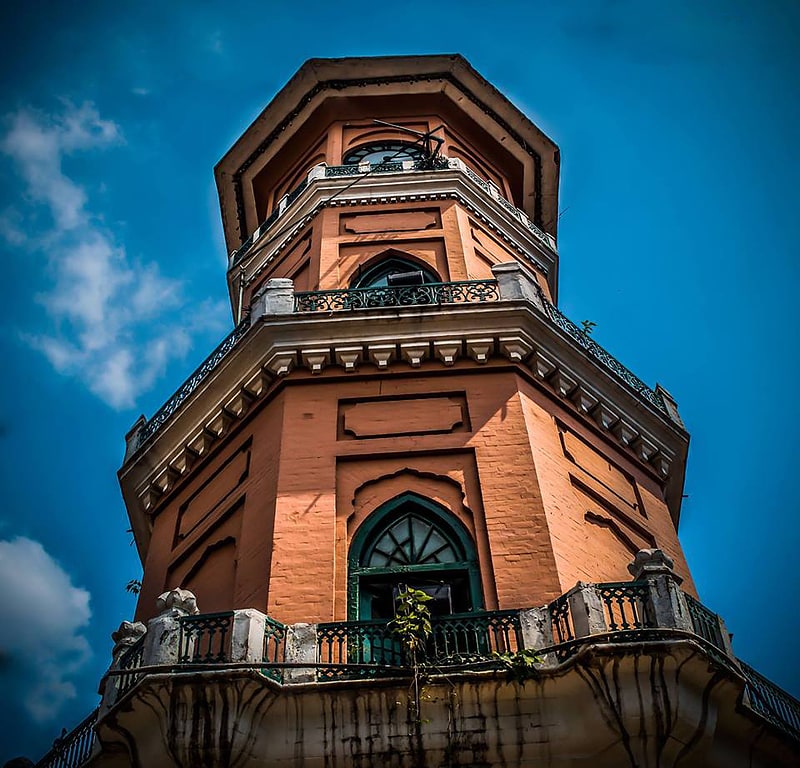
Historical landmark in Peshawar, Pakistan. The Cunningham Clock Tower in Peshawar, Khyber-Pakhtunkhwa, Pakistan, was built in 1900, "in commemoration of the Diamond Jubilee of Her Majesty the Queen Empress". The tower was named after Sir George Cunningham, former British governor and political agent in the province.[6]
Bab-e-Khyber
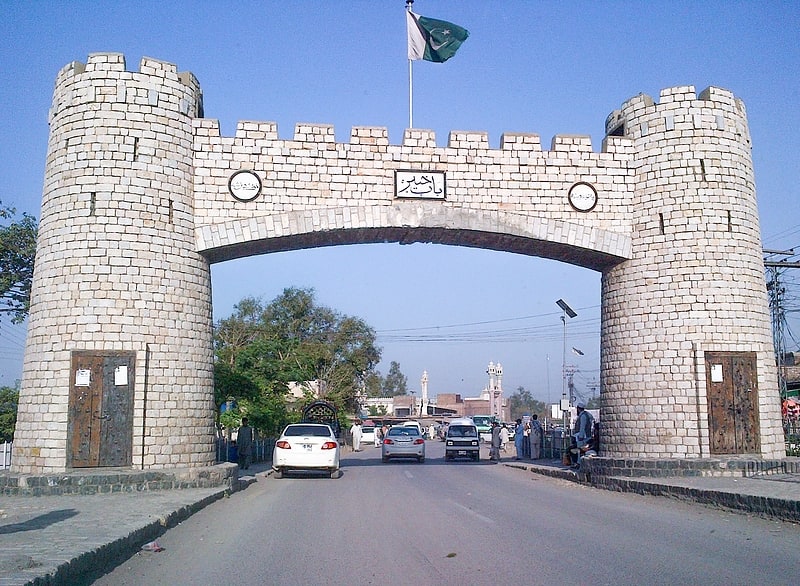
Also known as: باب خیبر
Historical landmark in Pakistan. The Bab-e-Khyber is a monument situated at the entrance of the Khyber Pass in the Khyber Pakhtunkhwa province of Pakistan. The gate is located immediately west of Peshawar, with the historic Jamrud Fort lying adjacent to it.[7]
Tatara Park
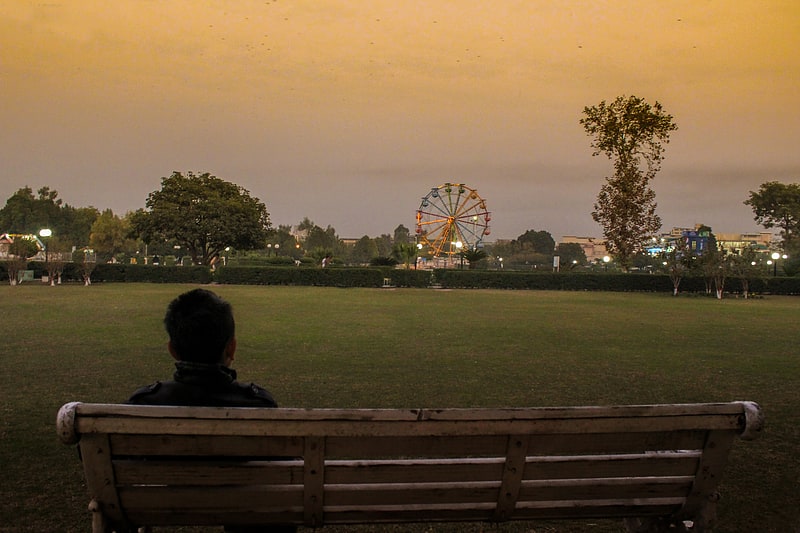
City park in Peshawar, Pakistan. Bagh-e-Tatara is a recreational park located in Phase 1, Hayatabad, Peshawar. Tatara Park has been developed from a garden lawn with man-made lakes, into a theme park.[8]
Kapoor Haveli
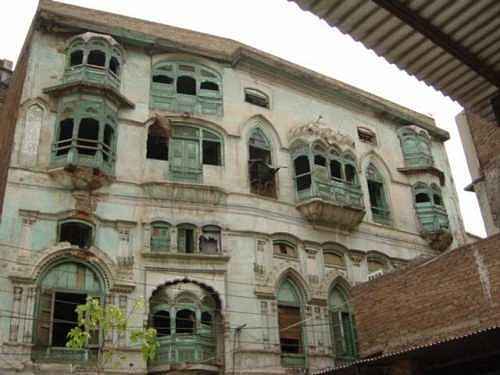
Building. Kapoor Haveli is a residential building in the city of Peshawar, in modern-day Pakistan. It was home of one generation of the Kapoor family of India. It was constructed before the partition of India, between 1918 and 1922, by Dewan Basheswarnath Kapoor, father of Prithviraj Kapoor, the first member of the family to enter film industry in 1928 as an extra in his first film, Be Dhari Talwar. Among the notable members of the family, Trilok Kapoor, Prithiviraj's younger brother and his son, Raj Kapoor were born in the building.
The Kapoors are Punjabi Hindus. After Partition in 1947, members of the family, like other Hindus, left the city and the building. It was purchased in an auction in 1968 by a local individual from Charsadda town in the North West Frontier Province under the settlement clause and then sold to a resident of Peshawar.
It is now being converted into a museum by IMGC Global Entertainment in Pakistan with the support of Khyber Pakhtunkhwa government. In 2021, the Deputy Commissioner of Peshawar values the house at Rs15 million. Khyber Pakhtunkhwa's archaeology department plans to turn the houses into a museum. The deputy commissioner has sent the notices to the current owners. The current owner, Gul Rehman Mohmand is asking for Rs350 million.[9]
Chowk Yadgar
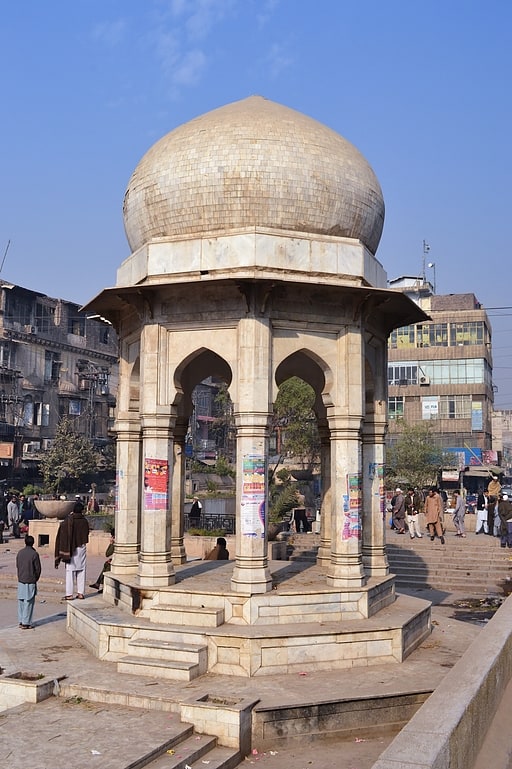
Chowk Yadgar, formerly Hasting’s Memorial, is a famous landmark in the old walled city of Peshawar. It is located at the convergence point of different major roads and bazaars of the old city.[10]
Address: Peshawar, Peshawar
Qasim Ali Khan Mosque
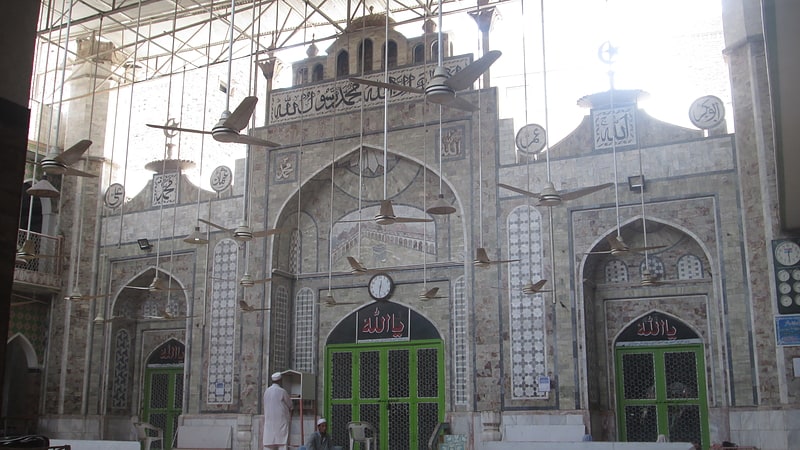
Also known as: مسجد قاسم علی خان
Mosque in Peshawar, Pakistan. The Qasim Ali Khan Mosque; is a 17th-century mosque in Peshawar, Khyber Pakhtunkhwa, Pakistan. Located in Qissa Khwani Bazaar, Mohallah Baqir Shah. The mosque was built during Emperor Aurangzeb's reign, by Qasim Ali Khan, a news writer and administrator in the government of Kabul. The mosque is situated in the Misgaran Qissa Khwani Bazaar.[11]